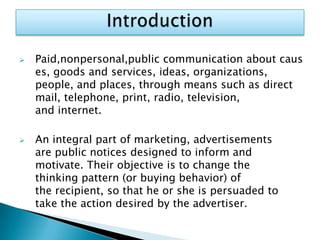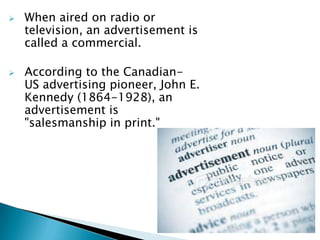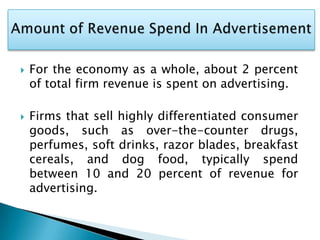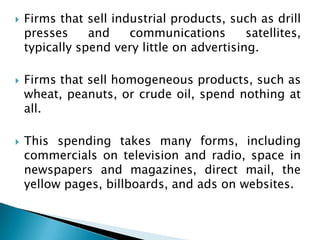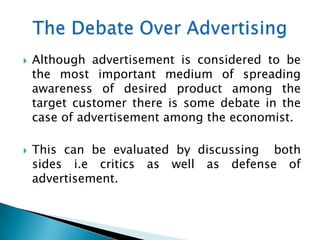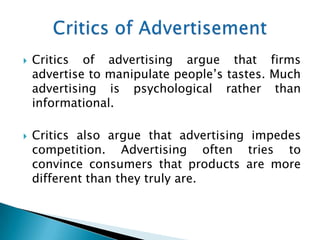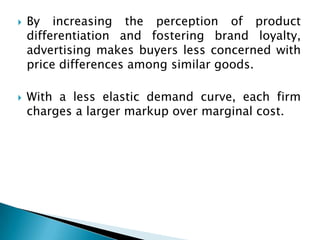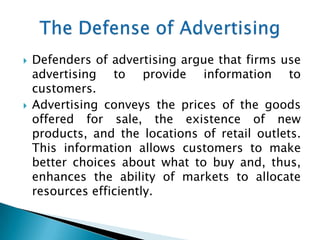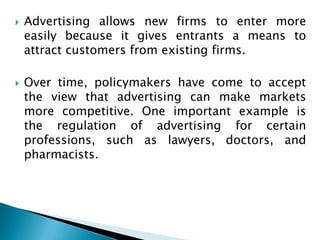Advertisement economics
- 1. BY : Nitesh Bhele (SIESCOMS)
- 2. ï Paid,nonpersonal,public communication about caus es, goods and services, ideas, organizations, people, and places, through means such as direct mail, telephone, print, radio, television, and internet. ï An integral part of marketing, advertisements are public notices designed to inform and motivate. Their objective is to change the thinking pattern (or buying behavior) of the recipient, so that he or she is persuaded to take the action desired by the advertiser.
- 3. ï When aired on radio or television, an advertisement is called a commercial. ï According to the Canadian- US advertising pioneer, John E. Kennedy (1864-1928), an advertisement is "salesmanship in print."
- 4. ï― For the economy as a whole, about 2 percent of total firm revenue is spent on advertising. ï― Firms that sell highly differentiated consumer goods, such as over-the-counter drugs, perfumes, soft drinks, razor blades, breakfast cereals, and dog food, typically spend between 10 and 20 percent of revenue for advertising.
- 5. ï― Firms that sell industrial products, such as drill presses and communications satellites, typically spend very little on advertising. ï― Firms that sell homogeneous products, such as wheat, peanuts, or crude oil, spend nothing at all. ï― This spending takes many forms, including commercials on television and radio, space in newspapers and magazines, direct mail, the yellow pages, billboards, and ads on websites.
- 6. ï― Although advertisement is considered to be the most important medium of spreading awareness of desired product among the target customer there is some debate in the case of advertisement among the economist. ï― This can be evaluated by discussing both sides i.e critics as well as defense of advertisement.
- 7. ï― Critics of advertising argue that firms advertise to manipulate peopleâs tastes. Much advertising is psychological rather than informational. ï― Critics also argue that advertising impedes competition. Advertising often tries to convince consumers that products are more different than they truly are.
- 8. ï― By increasing the perception of product differentiation and fostering brand loyalty, advertising makes buyers less concerned with price differences among similar goods. ï― With a less elastic demand curve, each firm charges a larger markup over marginal cost.
- 9. ï― Defenders of advertising argue that firms use advertising to provide information to customers. ï― Advertising conveys the prices of the goods offered for sale, the existence of new products, and the locations of retail outlets. This information allows customers to make better choices about what to buy and, thus, enhances the ability of markets to allocate resources efficiently.
- 10. ï― Advertising allows new firms to enter more easily because it gives entrants a means to attract customers from existing firms. ï― Over time, policymakers have come to accept the view that advertising can make markets more competitive. One important example is the regulation of advertising for certain professions, such as lawyers, doctors, and pharmacists.


